Lycurgus
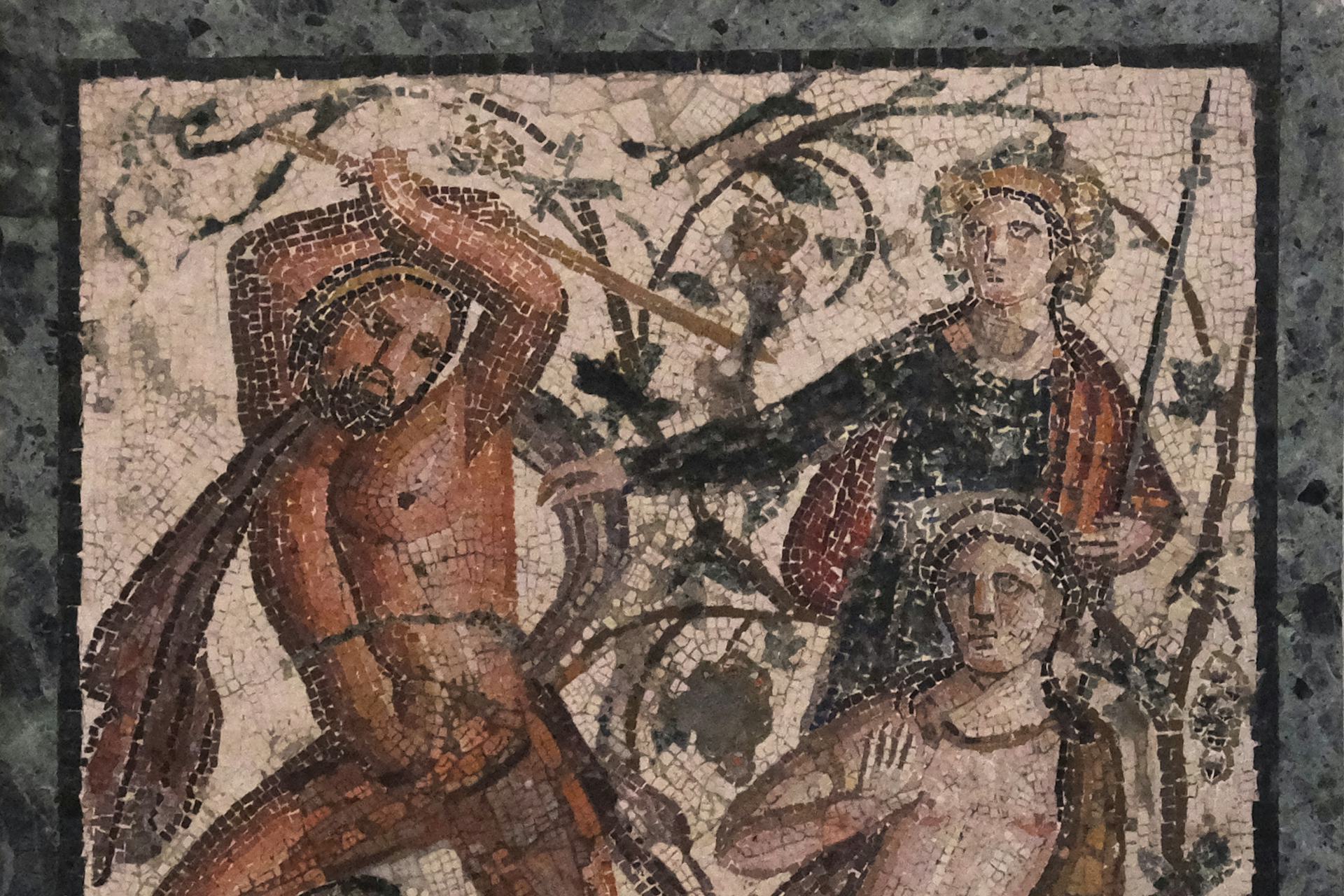
Roman mosaic from Herculaneum showing Lycurgus fighting Ambrosia and Dionysus (first century CE)
National Archaeological Museum, Naples / AmphipolisCC BY-SA 2.0Overview
Lycurgus, son of Dryas or Ares, was king of the Edonians in Thrace. He is best remembered for attacking Dionysus and his followers when he found them in his kingdom. For this act of impiety, Lycurgus was severely punished (though the exact punishment varies across ancient sources).
Where was Lycurgus from?
In most accounts, Lycurgus was a king of Thrace, a wild region northeast of the Greek peninsula. More specifically, a few authorities made him king of the Thracian Edonians. However, some sources connected Lycurgus with Syria, possibly even identifying him with a local Arabian god.

The "Lycurgus Cup," showing the madness and death of Lycurgus (4th century CE)
British Museum, London / Marie-Lan NguyenCC BY 2.5How was Lycurgus punished?
Lycurgus was punished by the gods for opposing Dionysus and committing violence against him and his followers. Though there were different versions of this punishment, it usually involved some element of madness.
According to one account, for example, Lycurgus was driven so mad that he killed his own son; in another, he killed his wife as well as his son before chopping off his own legs with an ax. Lycurgus’ punishment ended in his death (though one source asserts that he continued to be punished in the Underworld).

Mosaic detail of Bacchus reclining with lyre player, from a mosaic showing the punishment of Lycurgus (2nd/3rd century CE)
Musée Gallo-Romain, Saint-Romain-en-Gal / Carole RaddatoCC BY-SA 2.0Lycurgus and Dionysus
Lycurgus was one of several mortals who famously (and foolishly) attacked Dionysus and his cult. According to most accounts, Lycurgus pursued the god and his followers with an ax and ox-goad (a type of cattle prod), causing them to flee in terror. Dionysus himself only managed to escape by jumping into the sea.
Lycurgus, like other mythical sinners, was severely punished for his impious behavior. In one early source, it was Zeus who punished Lycurgus, but most later sources claimed that Dionysus returned to bring about the downfall of the man who had dared to defy him.
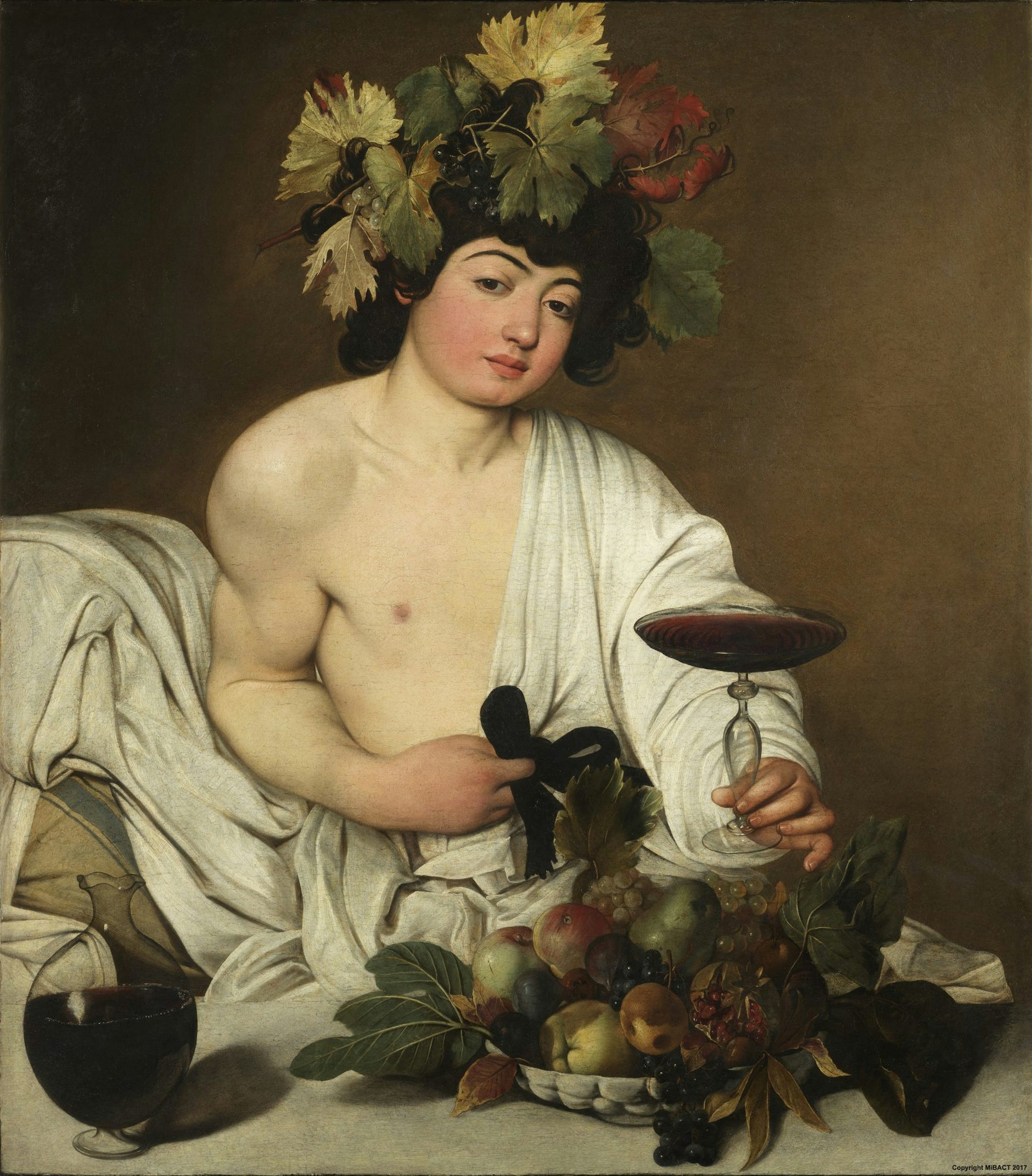
Bacchus by Caravaggio (ca. 1598)
Uffizi Gallery, FlorencePublic DomainAttributes
Most ancient sources made Lycurgus a king of Thrace. More specifically, Aeschylus (in a lost set of tragedies) described Lycurgus as the king of a Thracian people called the Edonians. Subsequent sources often echoed this claim.[1]
In other traditions, however, Lycurgus’ kingdom lay elsewhere. Homer, for example, placed Lycurgus in the neighborhood of Nysa (whose location was unknown even in antiquity).[2] In some later sources, Lycurgus was a king of Syria, where he was worshipped locally as a god after his death.[3]
Lycurgus was a violent and impious figure. His motives for opposing Dionysus were either pride[4] or a hatred of wine[5] (though in some traditions, it was Dionysus’ enemy Hera who turned Lycurgus against the young god).[6] In much later accounts, Lycurgus was actually seen as an exemplar of temperance and abstention from wine.[7]
From an early period, Lycurgus’ defining attribute was his ox-goad (or double ax), with which he was said to have pursued Dionysus and his followers.[8] Curiously, a few sources also specify that Lycurgus wore only one sandal, for reasons that remain unclear.[9]
Iconography
A number of depictions of Lycurgus are known from ancient vases, paintings, reliefs, and mosaics.
Lycurgus was usually identified by the double ax or ox-goad he carried. Originally he was shown in Thracian dress (matching his identity as a Thracian king), but in later periods he wore different costumes, such as laced boots, or else was shown completely naked. In literature, he sometimes wore only one sandal.

Apulian red-figure calyx-krater by the Lycurgus Painter (ca. 350–340 BCE) showing the maddened Lycurgus attacking his wife
British Museum, London / JastrowCC BY 2.5When he appeared in art, it was usually in scenes of his struggle with Dionysus. Lycurgus can be seen, for example, attacking Dionysus and his entourage, chopping down vines, receiving his punishment from Dionysus, or killing his own family in a fit of divine madness (likely part of his punishment).[10]
Etymology
The name Lycurgus (Greek Λυκοῦργος, translit. Lykoûrgos)[11] is a compound of two Greek words: λύκος (lýkos), meaning “wolf,” and εἴργω (eírgō), meaning “to ward off.” It therefore means “he who wards off wolves.” The name was given to several figures from Greek mythology.
English
Greek
Lycurgus Λυκοῦργος (Lykoûrgos) Phonetic
IPA
[lahy-KUR-guhs] /laɪˈkɜr gəs/
Family
Lycurgus was the son of Dryas, a figure who is otherwise unknown in Greek mythology.[12] There was an alternative genealogy, however, in which Lycurgus’ father was said to be Ares, the Greek god of war.[13]
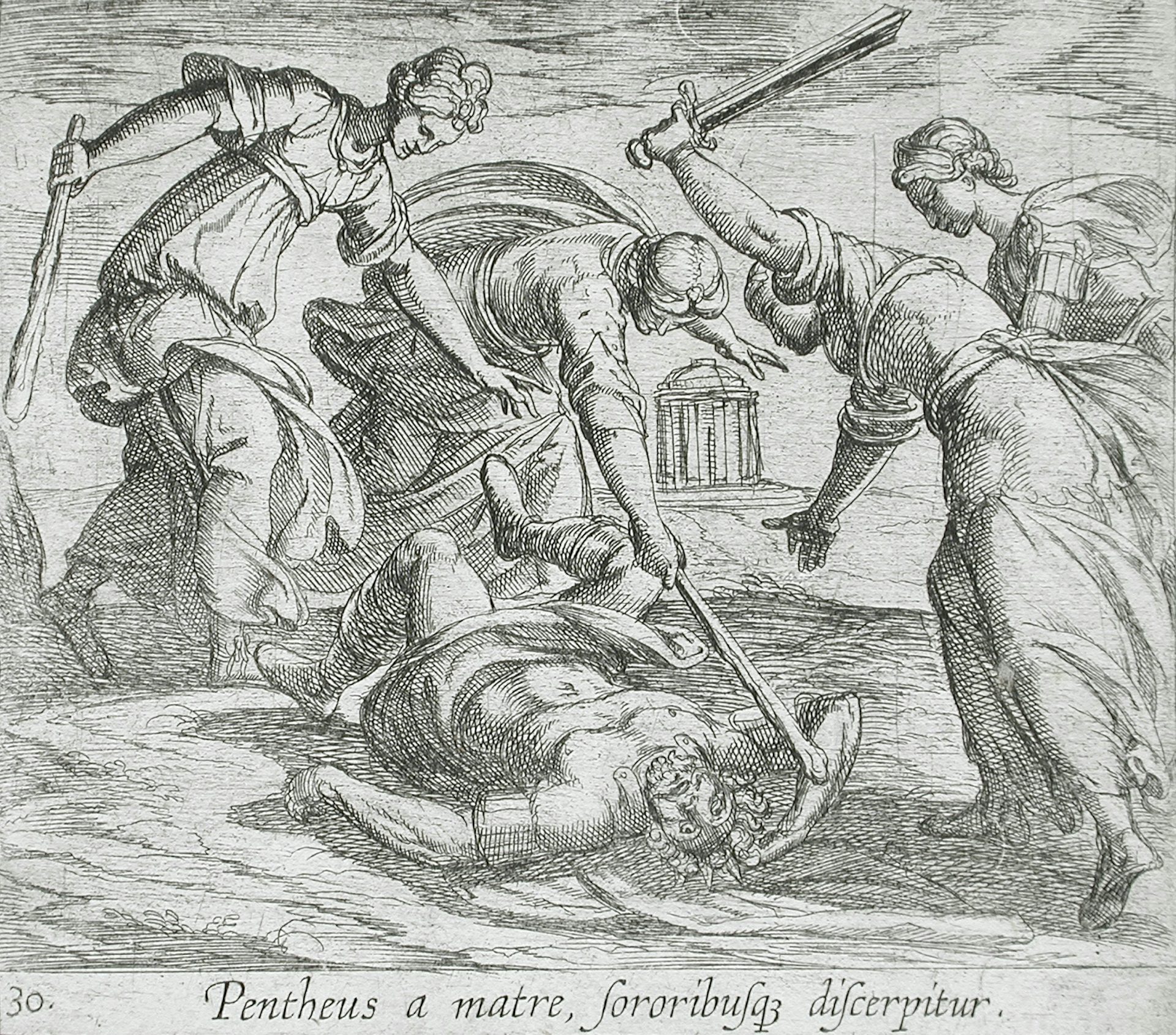
The Death of Pentheus by Antonio Tempesta and Wilhelm Janson (1606)
Los Angeles County Museum of ArtPublic DomainLycurgus had a wife and at least one child, both of whom played an important role in his myth. Lycurgus’ wife is not named in any extant sources, but according to Apollodorus, his son was called Dryas (after Lycurgus’ father).[14] Alternatively, Lycurgus may have had two sons named Ardys and Astacius.[15]
Mythology
Origins
Scholars have long debated the origins of the Lycurgus myth. In most ancient texts, the myth is set in Thrace, leading many authorities to argue that this is where Lycurgus originated.[16]
But other scholars have interpreted Lycurgus as a figure of Syrian extraction, pointing to the fact that some sources depict him as a Syrian king. There is also epigraphic evidence linking Lycurgus with an Arabian deity worshipped in Syria.[17]
Like other opponents of the cult of Dionysus (including the mythical Pentheus), Lycurgus has been interpreted by modern scholars as a manifestation of the tension between divine madness and human order. This tension was central to the mythology and worship of Dionysus.[18]
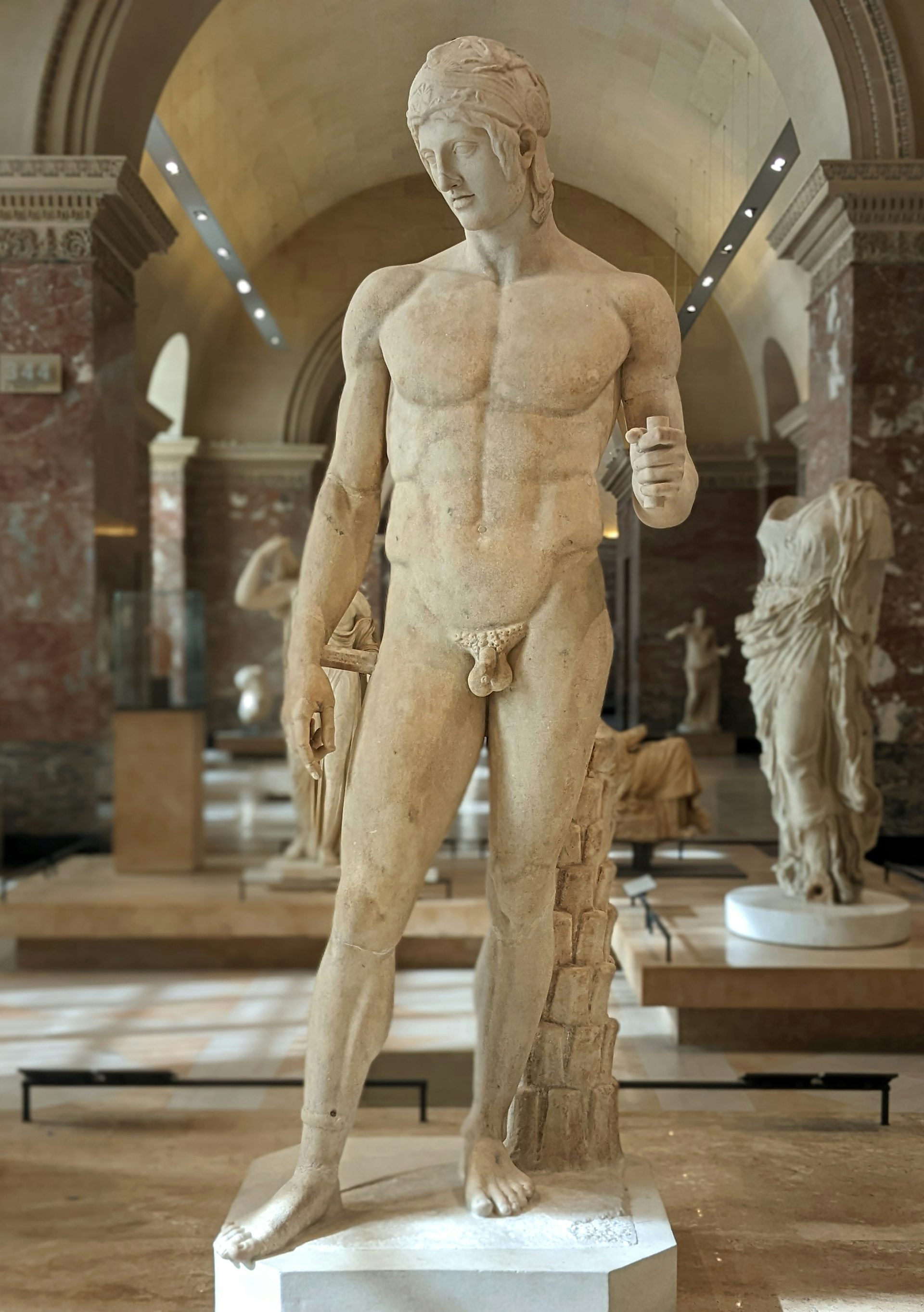
The "Borghese Ares," a 2nd-century Roman sculpture after a Greek original
Louvre Museum, Paris / ShonagonCC0Lycurgus’ Attack on Dionysus
At the heart of Lycurgus’ myth is his ill-advised attack on Dionysus, and on the god’s domain of wine. Ancient sources report several different versions of Lycurgus’ crime:
1. In an early version of the myth that goes back to Homer, Lycurgus attacked Dionysus and his nurses, either by himself or at the head of an army. Wielding an ox-goad, he pursued the group across Nysa. Dionysus only managed to escape by diving into the sea and seeking refuge with the Nereid Thetis. In some accounts, the god’s nurses were rescued by Zeus, who turned them into stars.[19]
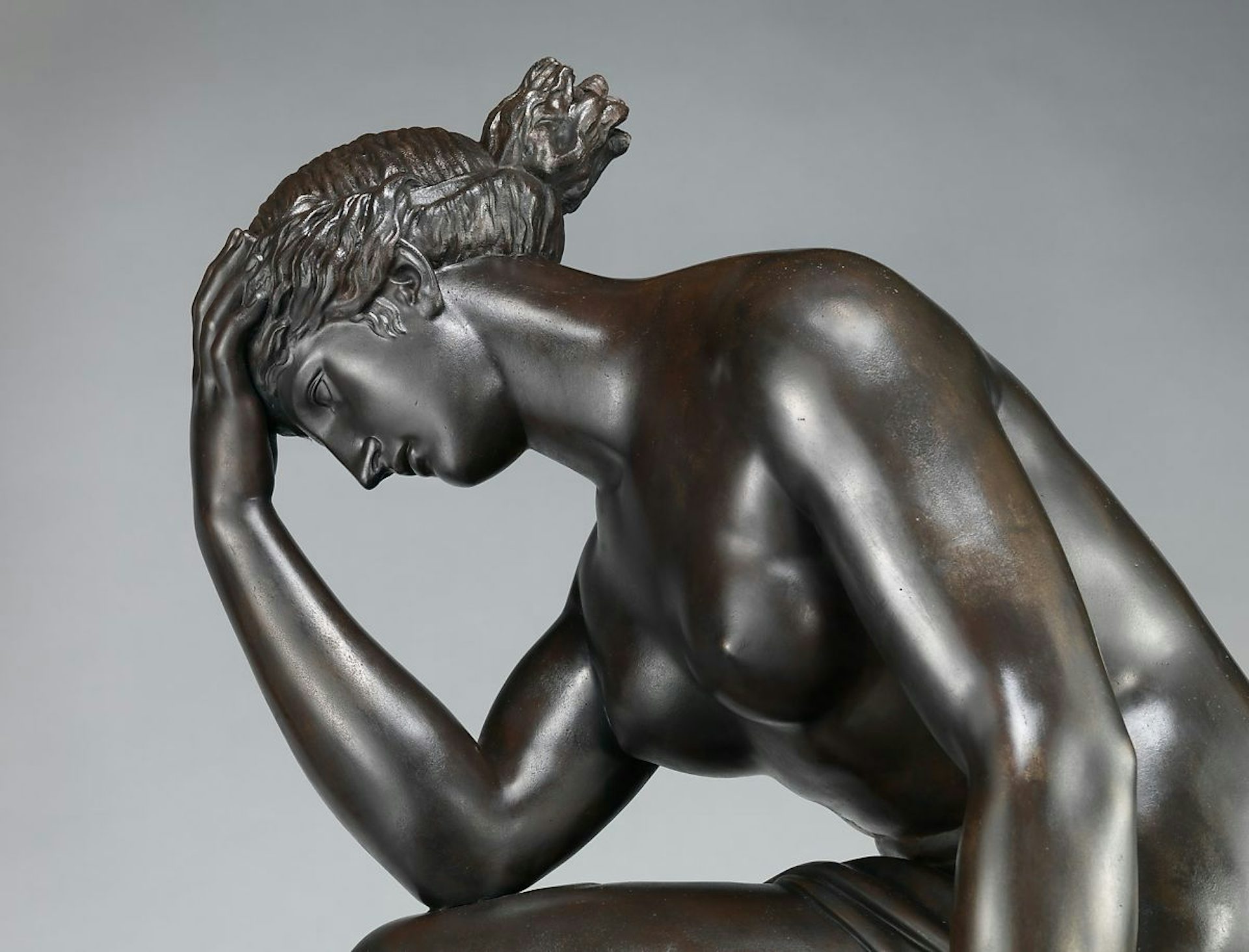
Thetis Transporting Arms for Achilles (detail) by William Theed the Elder (ca. 1804–1812)
The Metropolitan Museum of ArtPublic Domain2. In what became the most common version of the myth (popularized by the tragedian Aeschylus in his Lycurgea tetralogy, now lost), Lycurgus’ attack upon the entourage of Dionysus was concentrated on the god’s frenzied female worshippers, known as the Bacchae.[20]
3. In later versions, Lycurgus’ attack on Dionysus and his followers culminated in Lycurgus taking up an ax and chopping down Dionysus’ vines.[21]
4. Some texts connected Lycurgus’ attack on Dionysus with the nymph Ambrosia, one of Dionysus’ nurses. Confronted by Lycurgus, Ambrosia prayed to the earth goddess Gaia, who took pity on her and transformed her into a vine whose tendrils restrained her attacker.[22]
Lycurgus’ Punishment
Just as there were different versions of Lycurgus’ attack on Dionysus and his followers, there were also different versions of his punishment. According to most accounts, Dionysus punished Lycurgus himself with some form of madness, though in early traditions it was Zeus who punished him. Some sources even claimed that Lycurgus’ punishment was delegated to a minor deity.[23]
1. In the earliest version, transmitted by Homer, Zeus punished Lycurgus by striking him blind. The sinful king died shortly thereafter.[24]
2. In other versions, Dionysus took matters into his own hands by driving Lycurgus mad. In this frenzied state, Lycurgus killed his son Dryas, mistaking him for the grapevines he despised so much. Afterwards, the Edonians, at Dionysus’ prompting, put their king to death by restraining him and leaving him on Mount Pangaeum to be devoured by wild horses.[25]
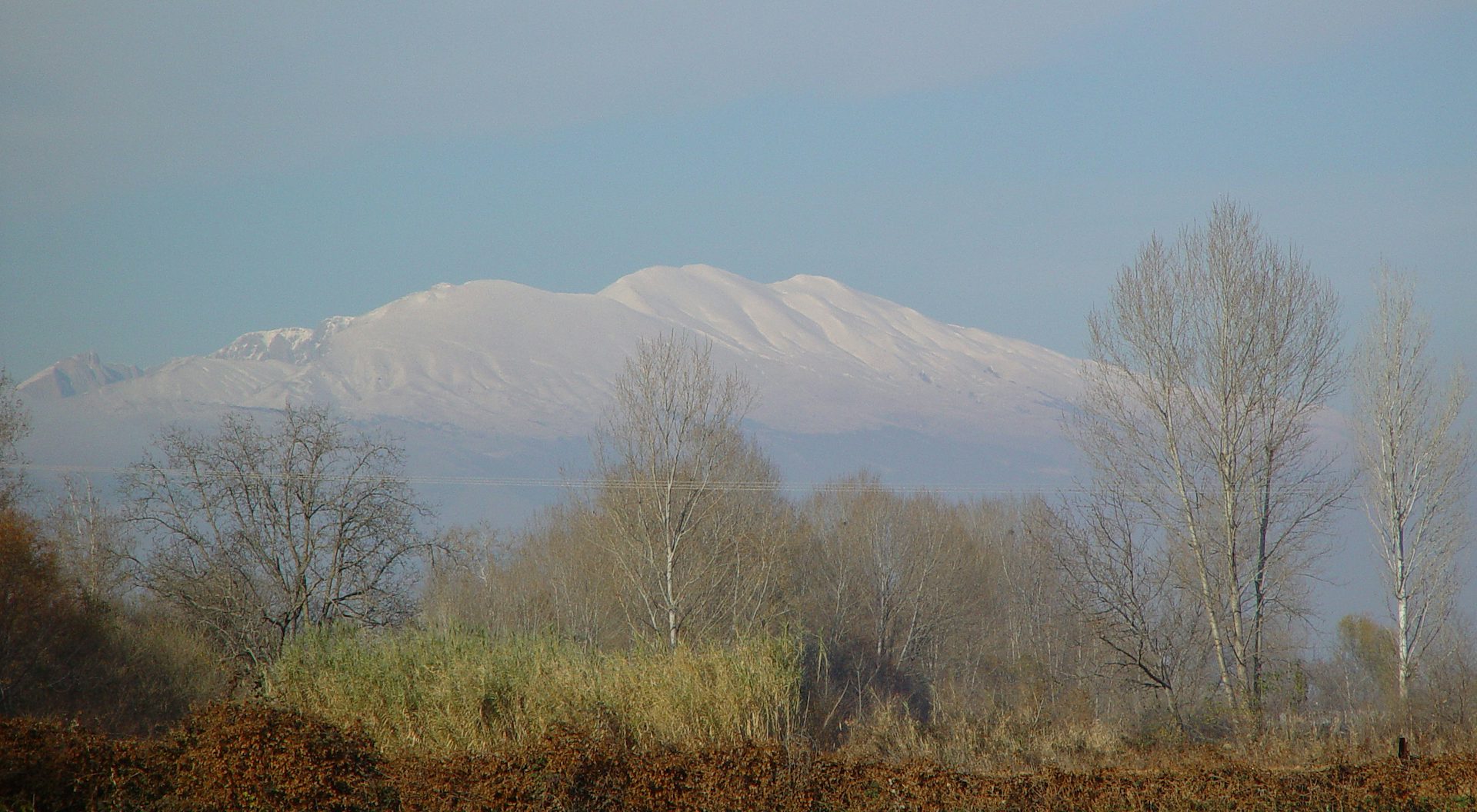
Photo of Mount Pangaeum (Pangaion) as seen from Philippi
MarsyasCC BY-SA 3.0In some accounts, the maddened Lycurgus also killed his wife and tried to rape his mother before chopping off his own legs, which he mistook for vines (after which he was devoured not by the horses of Mount Pangaeum but by the panthers of Rhodope).[26]
3. In one tradition, the mad Lycurgus was imprisoned in a cave until his madness subsided.[27]
4. In another version, Lycurgus’ divinely inflicted madness caused him to kill himself.[28]
5. In what appears to have been a later development, Lycurgus was bound in vines and suffocated.[29] Nonnus, elaborating on this version in his epic Dionysiaca, added that the vines that suffocated Lycurgus were none other than the tendrils of the metamorphosed Ambrosia, one of the nurses of Dionysus whom Lycurgus had attacked.
6. Nonnus’ Lycurgus eventually escaped these vines with the help of Hera, though Zeus still saw to it that he was banished and wandered the world mad and blind (before becoming a god after his death).[30]
According to an anonymous hymn composed around the third century CE, Lycurgus was sentenced to eternal torment in the Underworld after his death, “drawing water into a broken pitcher”[31] whose stream poured out endlessly into the realm of Hades.
Worship
The fifth-century CE poet Nonnus claimed, rather surprisingly, that Lycurgus became a god after his death, and that the people of Syria worshipped him with blood rituals.[32] There is some epigraphic evidence that Lycurgus was identified with a local Arabian deity in parts of the Near East; this may be the cult that is reflected in Nonnus’ text.[33]